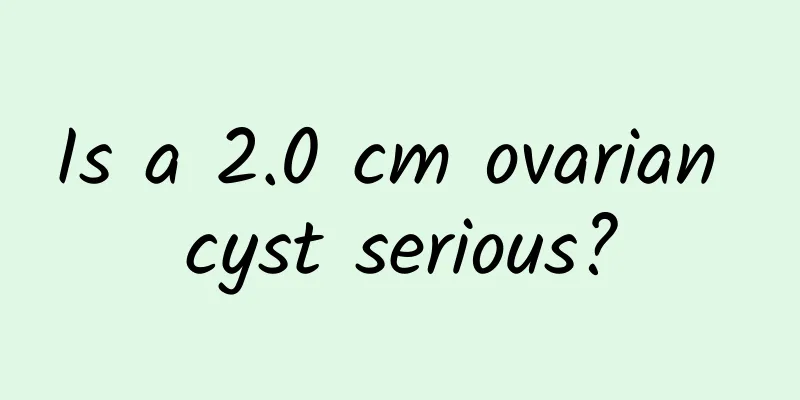What are the specific types of ovarian cysts?

|
What are the specific types of ovarian cysts? Ovarian cysts are common in women's ovaries. Most cysts are caused by changes in the normal function of the ovaries, so most ovarian cysts are benign. So what are the specific types of ovarian cysts? Let our experts introduce them to you in detail. Types of ovarian cysts 1. Functional cysts: This is the most common cyst. It occurs in women of childbearing age during the ovulation cycle. An abnormal amount of fluid accumulates in the follicle or corpus luteum, forming a follicular cyst or corpus luteum cyst. This functional cyst can sometimes be very large, but regardless of medication or not, it usually disappears on its own within three months. Types of ovarian cysts 2. Hemorrhagic cysts: Sometimes follicular cysts and corpus luteum cysts grow too fast, causing the ovarian tissue to tear and bleed. The blood accumulates in the ovary because there is no outlet, which is called a hemorrhagic cyst. This type of cyst usually disappears on its own, but it takes a long time. If the physical discomfort is more obvious, you can take medicine to alleviate the symptoms. Only in a few cases, when the patient presents more serious symptoms, surgery is required. Type 3 of ovarian cysts: Serous epithelial cysts and mucinous epithelial cysts: After three months of observation, cysts that still exist may be epithelial ovarian cysts rather than functional cysts. This is because serous cells and mucinous cells with secretory functions are buried in the ovaries after ovulation, and continuously secrete fluid to form cysts. This type of cyst will not disappear and needs to be removed surgically. Type 4 of ovarian cysts: Chocolate cysts (endometriosis): Endometriosis grows in the ovaries, forming a large amount of sticky coffee-colored liquid that looks like chocolate. Because endometriosis will grow larger over time, it will gradually erode normal tissues and cause irreversible damage to ovarian tissues. After evaluating its severity, surgery may be required. Types of ovarian cysts 5. Teratoma: This is a very special cyst. It may be caused by a problem with cell differentiation during the embryonic period, which takes a long time to manifest. It will form a collection of hair, teeth, and some oils in the ovary. Since the teratoma itself will not disappear on its own and may continue to grow, and there is a 15% chance of causing ovarian torsion, it is best to remove it early. Generally speaking, the rate of malignancy is less than one in a thousand. Types of ovarian cysts 6. Ovarian cancer: The chance of developing ovarian cancer is quite low, but because it is located in the pelvic cavity, it is not easy to detect early. There are many types of ovarian malignant tumors, and their prognosis varies. Generally speaking, middle-aged and elderly women are more likely to get epithelial cell cancer, which has a higher chance of recurrence and a poorer prognosis. Types of ovarian cysts 7. Endometrioid tumors have a smooth surface and are often unilocular. The inner wall is composed of a layer of tall columnar epithelium that is very similar to the endometrium. The surrounding connective tissue lacks endometrial stroma, and there is no bleeding inside or outside the cyst. The above is an introduction to the types of ovarian cysts. Experts have introduced their symptoms accordingly. I believe you have learned something about them and hope it will be helpful to you. If you have other questions about ovarian cysts, please consult our online experts or call our consultation hotline. Experts will answer your questions in detail. Feihua Health Network wishes you good health! Ovarian cysts http://www..com.cn/fuke/ncnn/ |
<<: Experts introduce you to the two major hazards of ovarian cysts
>>: What are the causes of ovarian cysts?
Recommend
Avoid entering weight loss hell! Beware of the 6 Chinese New Year weight gain traps
Be careful not to gain weight during the Chinese ...
How to deal with irregular menstruation at 17 years old What examinations should girls do for irregular menstruation
What should I do if I have irregular menstruation...
Recommended hospitals for hyperprolactinemia
Where is the best hospital for the treatment of h...
8 signs that you may have a miscarriage
There is no such thing as eight symptoms indicati...
The treatment of dysmenorrhea with Chinese medicinal wine is mainly based on the type of treatment
Traditional Chinese medicine often uses medicated...
What are the treatments for female cervicitis? Female cervicitis is often treated with these methods
For patients with late-stage cervicitis, the feel...
How to treat menstruation after abortion for one month? 7 dietary treatments for menstruation after abortion
One month after an abortion without menstruation ...
Feeling tense and cricked all over? Make good use of the "little jump" action to relieve stress and relax
Have you had such experience? Do you always feel ...
Symptoms of cervicitis, pelvic inflammatory disease, endometritis
Common symptoms of cervicitis, pelvic inflammator...
What are the common symptoms of multiple uterine fibroids?
Uterine fibroids are a disease suffered by many w...
What are the external symptoms of threatened miscarriage?
What are the external manifestations of threatene...
Symptoms of cervical warts at different stages
Cervical warts are still very unfamiliar to most ...
What are the signs of recurrent miscarriage?
What are the signs of recurrent miscarriage? Habi...
What are the factors that cause miscarriage? There are 4 major factors
The main factors that induce miscarriage are embr...
How to check for vaginitis?
Experts point out that once women suffer from vag...









